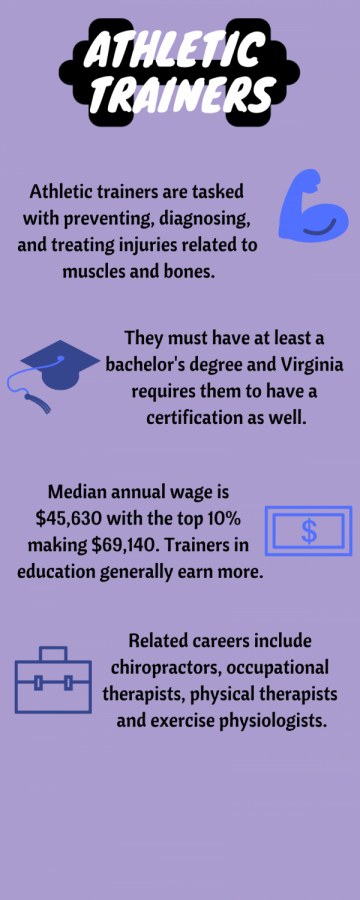Student athletic trainers provide essential support for athletes in need
March 25, 2019
From shin splints to broken limbs, the Athletic Trainer Student Assistants (ATSAs), led by certified athletic trainers Kevin Boss and Katelyn Bishop, almost never have an empty office. Athletes rush in and out, each with an ailment to be remedied. Some need to be stretched, others need to go on the thermal therapy system Game Ready and some need more extensive care.
At the center of this action, the ATSAs are tasked with helping athletes, and the process of earning the ATSA title is no simple feat.
“We’re [here] for almost everything, do so much work and spend so much time to learn how to do this stuff,” senior and ATSA Hannah Ehlers said. “We’re happy to help people.”
Because many of the current ATSAs are seniors, there are opportunities for underclassmen to apply for these positions. However, there are some prerequisites.
“First, you have to take Sports Medicine and then you have to apply,” Ehlers said. “Then, there’s an interview with Boss and Bishop.”
Throughout this process, it’s important to be dedicated and willing to learn new information.
“Reach out, be open, be proactive. We definitely want people to come out next year and show some interest,” senior and ATSA Anna Kate Erstling said. “One of the best things about the program is the ability to explore and broaden your understanding of this field of medicine.”
Considering that the time commitment can sometimes require 12 hours a week during the summer, some may shy away from the opportunity, but most ATSAs would like to explore the field later in life.
“This is definitely my social life. I work two or three hours every day after school and then games or meets after that,” Ehlers said. “It’s a lot, but this is what I want to do when I grow up, so I’m perfectly okay with telling my friends, ‘No, I don’t want to hang out.’”
Despite this commitment, ATSAs have the freedom to take a break if they are overwhelmed with other aspects of life.
“It’s based on yourself; we don’t have set hours,” Erstling said. “If you have a lot of homework one day, you don’t have to come in, but you can do homework in the field. It’s open to how you’re feeling.”
The responsibilities of the athletic trainers go beyond helping with injuries, as they are also in charge of filing paperwork for tryouts.
“We check, enter and file [physicals], and make sure the athletes have physicals so if they get injured, we have their history,” Ehlers said.
One of the benefits of ATSAs is the stress they take off of the certified athletic trainers.
“The ATSAs do an amazing job at making sure that the athletic training room is run efficiently. They’re an extension of us as healthcare professionals,” Boss said. “I would say any program without ATSAs is very hectic because they help us out so much.”


